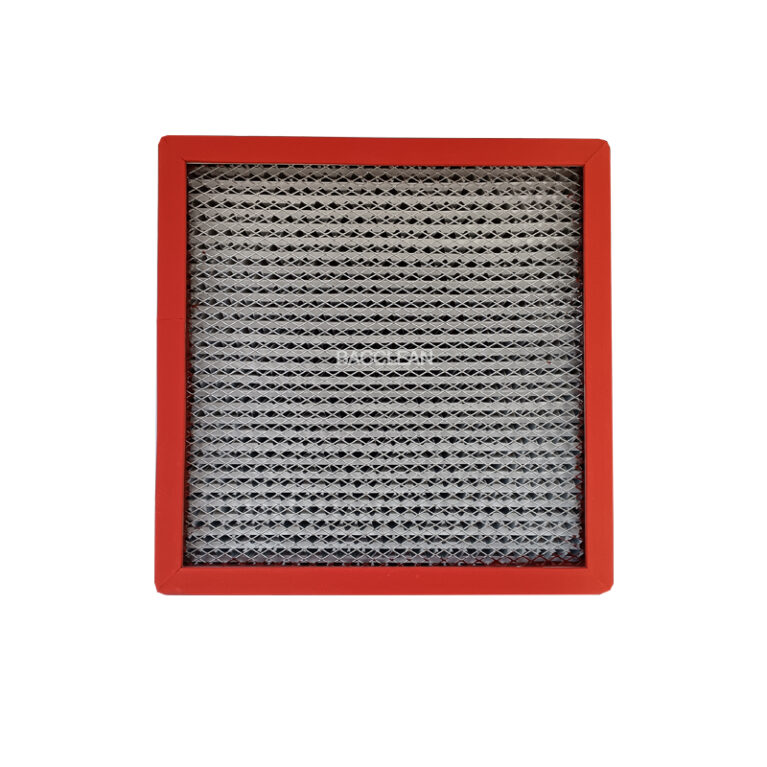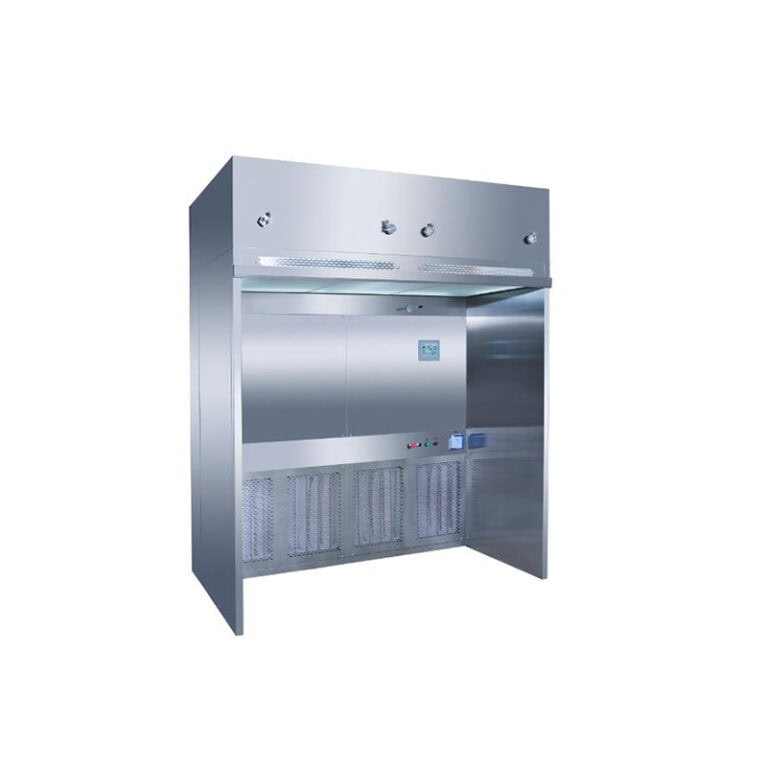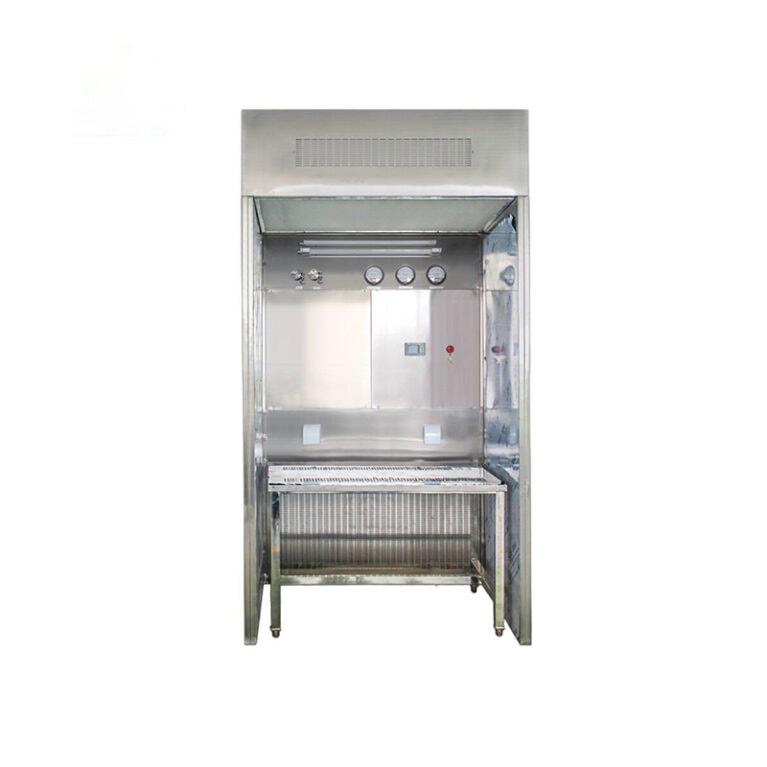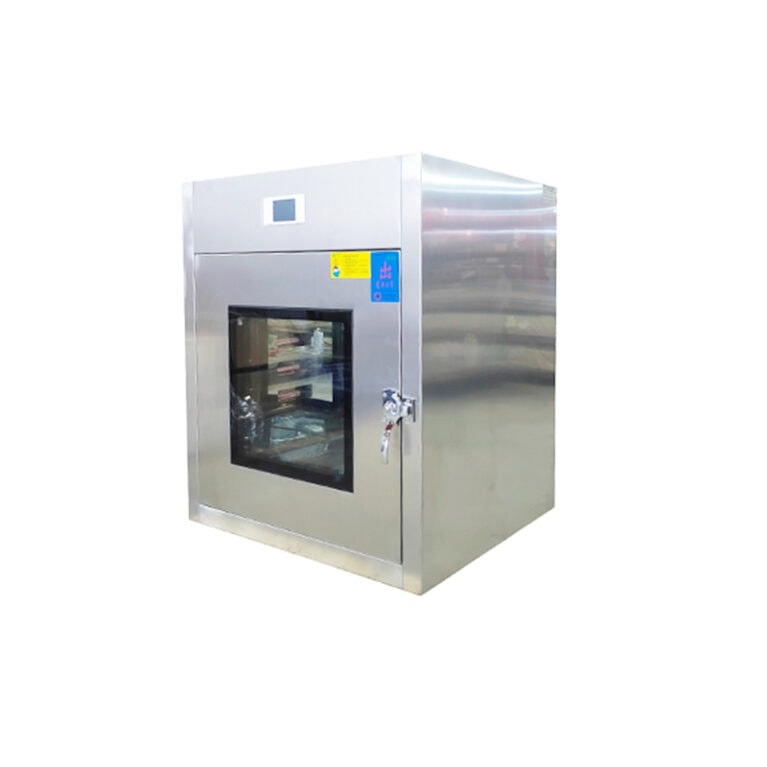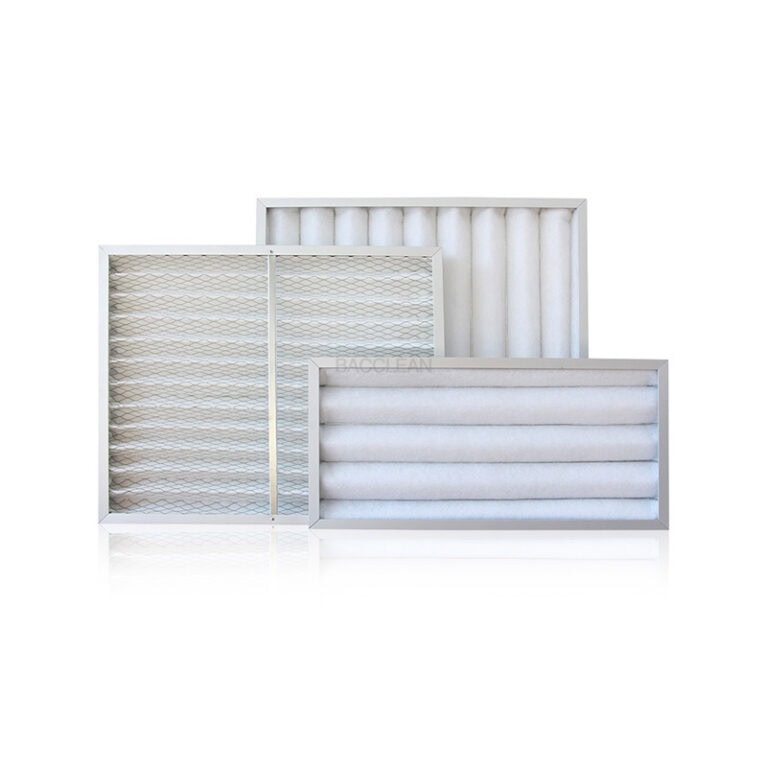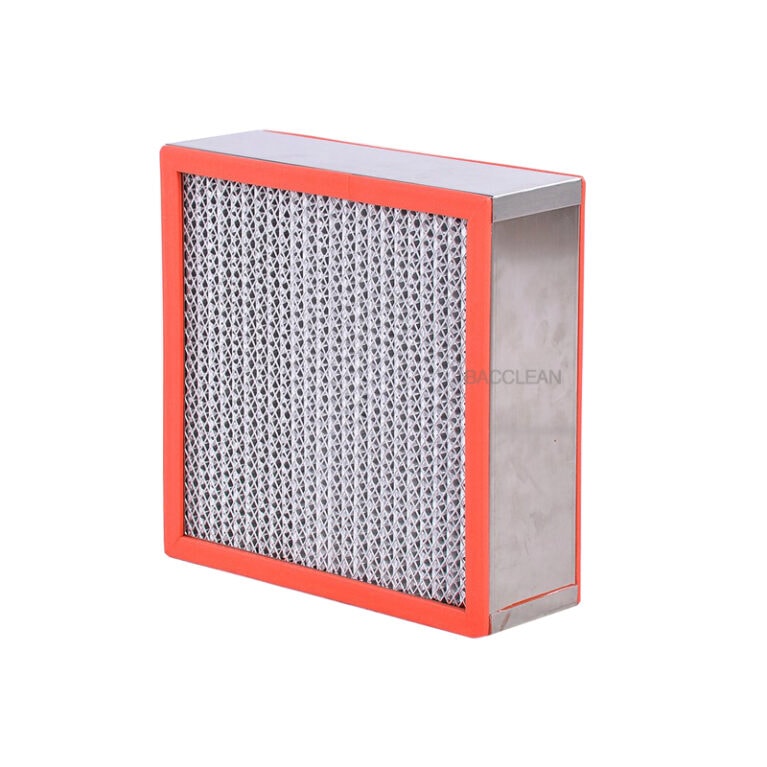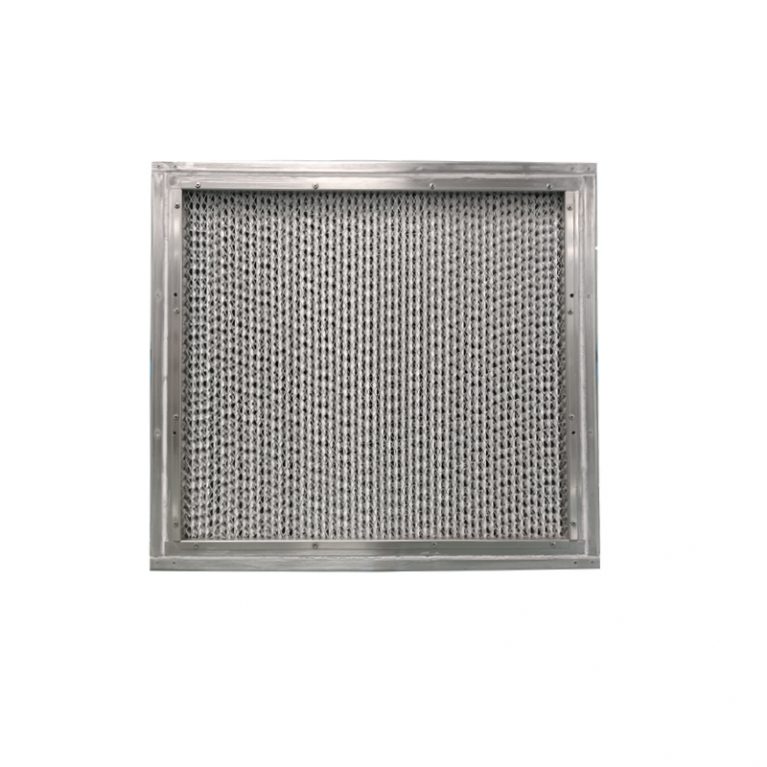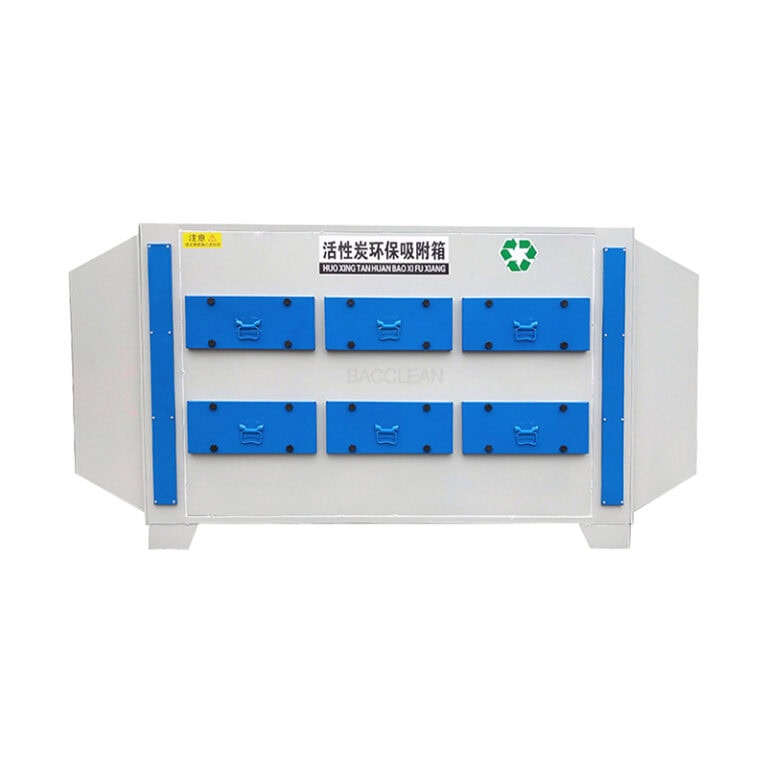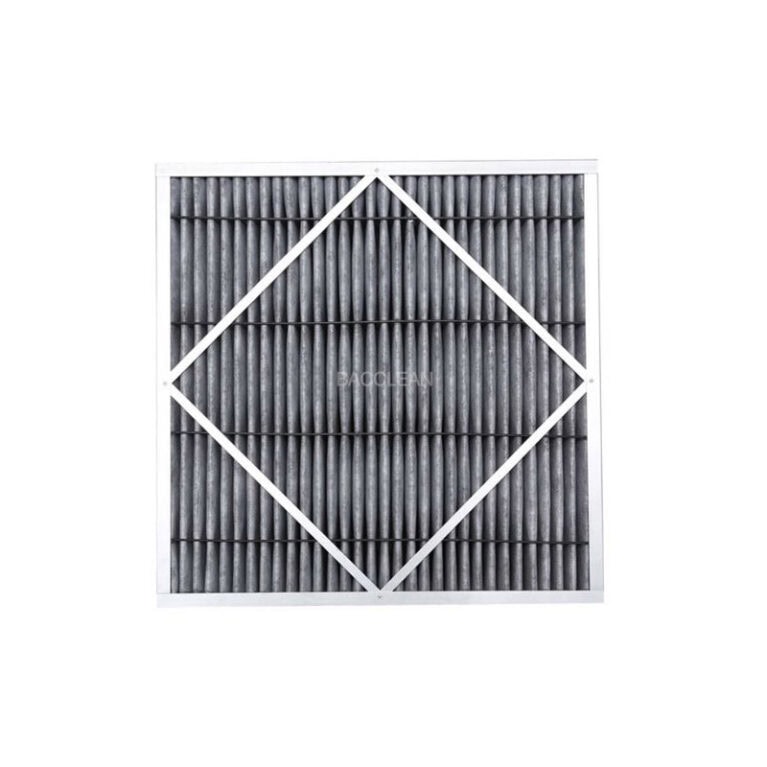The noise level of the fan filter unit (FFU) is a key factor that cannot be ignored in the selection process, directly affecting the working environment, personnel comfort and equipment operation stability of the clean room. Its specific impact on the selection is mainly reflected in the following aspects:
1. Determine whether it meets the noise limit requirements of the cleanroom
Cleanrooms in different application scenarios have clear mandatory or recommended standards for noise, and the noise level is the “entry threshold” for selection.
Pharmaceutical and food cleanrooms: They must comply with GB 50457 “Code for Design of Clean Rooms in Pharmaceutical Industry”, with noise levels ≤60dB (A). Some aseptic filling areas even require noise levels ≤55dB (A) to prevent noise from interfering with the operators’ attention and reduce the risk of contamination.
Semiconductor and precision electronics workshops: Precision equipment (such as photolithography machines and wafer inspection equipment) is sensitive to vibration and noise. The noise level should be ≤60dB (A). Excessive noise may be transmitted through the air or structure, affecting the accuracy of the equipment and leading to a decrease in product yield.
Laboratory and biosafety cabinet accessories: Researchers need to work indoors for long periods of time. The noise level should be controlled below 50 to 55dB (A) to avoid fatigue or hearing damage caused by long-term exposure to high-noise environments.
If the noise level of the FFU exceeds the scene limit, even if parameters such as filtration efficiency and air volume meet the standards, it will be excluded due to non-compliance with environmental requirements, directly restricting the selection range.
Second, it affects the selection of fan types and structural design
The noise of FFU mainly comes from the operation of the fan (aerodynamic noise, mechanical vibration noise). The noise characteristics of different fan types vary significantly. When selecting, it is necessary to match according to the noise requirements
Brushless DC fans: They have relatively low noise (typically 50 to 60dB (A)). Due to their use of electronic commutation technology, mechanical friction is small, and they can reduce airflow turbulence noise through precise speed regulation. They are suitable for scenarios with strict low-noise requirements (such as sterile workshops in the pharmaceutical industry and laboratories), but they are relatively expensive.
Ac centrifugal fan: Moderate noise (55 to 65dB (A)), with relatively obvious noise from the friction between the blades and the air as well as the electromagnetic noise of the motor. If the noise limit in the scene is relatively loose (such as a Class 100,000 ordinary electronic assembly workshop), it can be a cost-effective choice.
Axial flow fans: The noise is greatly affected by the air volume. At high air volumes, it can reach 60 to 70dB (A). They are only suitable for simple clean areas that are not sensitive to noise (such as temporary storage areas); otherwise, they will be phased out due to noise exceeding the standard.
In addition, in scenarios with high noise requirements, FFU models with shock-absorbing designs (such as installing rubber shock-absorbing pads between the fan and the casing) and sound-absorbing structures (such as installing porous sound-absorbing materials at the air inlet) will be given priority. These designs will increase the product cost and further affect the cost-effectiveness balance of the selection.
Iii. Limit the range of air volume regulation and operation mode
The noise of FFU increases significantly with the increase of air volume (for A 10% increase in air volume, the noise may rise by 3 to 5dB (A)), so the noise requirements will in turn limit the adjustment space of air volume:
If the cleanroom needs to operate frequently in high air volume mode (such as during the initial stage of equipment startup and after contamination recovery), it is necessary to ensure that the noise of the FFU still meets the limit at the maximum air volume. For instance, if A semiconductor workshop requires noise to be ≤60dB (A) at the maximum air volume, then a brushless DC fan model with lower noise at high air volume should be selected instead of a common AC fan (the latter may reach over 65dB (A) at high air volume).
For scenarios that require “low air volume energy conservation at night”, the noise requirements may be more lenient, but it is necessary to verify whether the noise at low air volume is too low (to avoid infrasound waves generated by the low-frequency vibration of the fan, which may instead affect comfort), as this will limit the selection of the fan speed regulation range.
Fourth, it affects the installation layout and cost budget
To control noise, the selection may need to be combined with a specific installation method, which in turn affects the overall cost
If the noise level of the FFU itself is slightly high (such as 62dB (A), approaching the limit of 60dB (A)), additional noise reduction measures may be required (such as filling the ceiling with sound insulation cotton or installing sound-absorbing static pressure boxes), which will increase installation costs and the space occupied by the ceiling. If space is limited (such as in a clean room with a lower floor height), Then only FFU models with lower noise levels (such as 58dB (A)) can be chosen, but their procurement costs are higher.
When multiple FFUs operate in parallel, noise will be superimposed (60dB (A) for A single unit, and up to 63dB (A) for two units). When selecting the model, it is necessary to calculate whether the total noise exceeds the standard. It may be necessary to reduce the air volume of each unit, increase the number (by distributing the layout to reduce the superimposed noise), or choose a model with lower noise. This will affect the selection decision on the number and layout of the equipment.
V. Adaptability of personnel and Equipment in Long-term Use
Even if the noise meets the short-term limit, the comfort of long-term operation will still affect the selection:
Operators who work in high-noise environments for A long time (such as above 65dB (A)) are prone to irritability, fatigue, reduced work efficiency, and even health problems. Therefore, high-end clean rooms (such as biomedicine and precision instruments) usually prefer low-noise FFUs (below 55dB (A)), even though they are more expensive.
Some precision equipment (such as electron microscopes and optical inspection systems) are not only sensitive to sound pressure levels but also to frequencies (for instance, low-frequency noise may cause equipment resonance). When selecting, it is necessary to require the FFU to provide noise spectrum curves to ensure that its main noise frequencies avoid the sensitive frequency bands of the equipment. This will further narrow down the selection range.
Résumé
Noise level is a “binding indicator” for FFU selection: it not only determines the type of fan and the range of structural design options, but also affects the air volume regulation strategy, installation layout and cost budget, and even relates to the long-term usage effect and compliance of the clean room. When selecting the model, factors such as the noise limit of the scene, personnel comfort, and equipment sensitivity should be taken into account to strike a balance between noise control, performance, and cost. If necessary, actual measurement verification (such as noise detection after the installation of the prototype) should be conducted to ensure the rationality of the selection.
1. Determine whether it meets the noise limit requirements of the cleanroom
Cleanrooms in different application scenarios have clear mandatory or recommended standards for noise, and the noise level is the “entry threshold” for selection.
Pharmaceutical and food cleanrooms: They must comply with GB 50457 “Code for Design of Clean Rooms in Pharmaceutical Industry”, with noise levels ≤60dB (A). Some aseptic filling areas even require noise levels ≤55dB (A) to prevent noise from interfering with the operators’ attention and reduce the risk of contamination.
Semiconductor and precision electronics workshops: Precision equipment (such as photolithography machines and wafer inspection equipment) is sensitive to vibration and noise. The noise level should be ≤60dB (A). Excessive noise may be transmitted through the air or structure, affecting the accuracy of the equipment and leading to a decrease in product yield.
Laboratory and biosafety cabinet accessories: Researchers need to work indoors for long periods of time. The noise level should be controlled below 50 to 55dB (A) to avoid fatigue or hearing damage caused by long-term exposure to high-noise environments.
If the noise level of the FFU exceeds the scene limit, even if parameters such as filtration efficiency and air volume meet the standards, it will be excluded due to non-compliance with environmental requirements, directly restricting the selection range.
Second, it affects the selection of fan types and structural design
The noise of FFU mainly comes from the operation of the fan (aerodynamic noise, mechanical vibration noise). The noise characteristics of different fan types vary significantly. When selecting, it is necessary to match according to the noise requirements
Brushless DC fans: They have relatively low noise (typically 50 to 60dB (A)). Due to their use of electronic commutation technology, mechanical friction is small, and they can reduce airflow turbulence noise through precise speed regulation. They are suitable for scenarios with strict low-noise requirements (such as sterile workshops in the pharmaceutical industry and laboratories), but they are relatively expensive.
Ac centrifugal fan: Moderate noise (55 to 65dB (A)), with relatively obvious noise from the friction between the blades and the air as well as the electromagnetic noise of the motor. If the noise limit in the scene is relatively loose (such as a Class 100,000 ordinary electronic assembly workshop), it can be a cost-effective choice.
Axial flow fans: The noise is greatly affected by the air volume. At high air volumes, it can reach 60 to 70dB (A). They are only suitable for simple clean areas that are not sensitive to noise (such as temporary storage areas); otherwise, they will be phased out due to noise exceeding the standard.
In addition, in scenarios with high noise requirements, FFU models with shock-absorbing designs (such as installing rubber shock-absorbing pads between the fan and the casing) and sound-absorbing structures (such as installing porous sound-absorbing materials at the air inlet) will be given priority. These designs will increase the product cost and further affect the cost-effectiveness balance of the selection.
Iii. Limit the range of air volume regulation and operation mode
The noise of FFU increases significantly with the increase of air volume (for A 10% increase in air volume, the noise may rise by 3 to 5dB (A)), so the noise requirements will in turn limit the adjustment space of air volume:
If the cleanroom needs to operate frequently in high air volume mode (such as during the initial stage of equipment startup and after contamination recovery), it is necessary to ensure that the noise of the FFU still meets the limit at the maximum air volume. For instance, if A semiconductor workshop requires noise to be ≤60dB (A) at the maximum air volume, then a brushless DC fan model with lower noise at high air volume should be selected instead of a common AC fan (the latter may reach over 65dB (A) at high air volume).
For scenarios that require “low air volume energy conservation at night”, the noise requirements may be more lenient, but it is necessary to verify whether the noise at low air volume is too low (to avoid infrasound waves generated by the low-frequency vibration of the fan, which may instead affect comfort), as this will limit the selection of the fan speed regulation range.
Fourth, it affects the installation layout and cost budget
To control noise, the selection may need to be combined with a specific installation method, which in turn affects the overall cost
If the noise level of the FFU itself is slightly high (such as 62dB (A), approaching the limit of 60dB (A)), additional noise reduction measures may be required (such as filling the ceiling with sound insulation cotton or installing sound-absorbing static pressure boxes), which will increase installation costs and the space occupied by the ceiling. If space is limited (such as in a clean room with a lower floor height), Then only FFU models with lower noise levels (such as 58dB (A)) can be chosen, but their procurement costs are higher.
When multiple FFUs operate in parallel, noise will be superimposed (60dB (A) for A single unit, and up to 63dB (A) for two units). When selecting the model, it is necessary to calculate whether the total noise exceeds the standard. It may be necessary to reduce the air volume of each unit, increase the number (by distributing the layout to reduce the superimposed noise), or choose a model with lower noise. This will affect the selection decision on the number and layout of the equipment.
V. Adaptability of personnel and Equipment in Long-term Use
Even if the noise meets the short-term limit, the comfort of long-term operation will still affect the selection:
Operators who work in high-noise environments for A long time (such as above 65dB (A)) are prone to irritability, fatigue, reduced work efficiency, and even health problems. Therefore, high-end clean rooms (such as biomedicine and precision instruments) usually prefer low-noise FFUs (below 55dB (A)), even though they are more expensive.
Some precision equipment (such as electron microscopes and optical inspection systems) are not only sensitive to sound pressure levels but also to frequencies (for instance, low-frequency noise may cause equipment resonance). When selecting, it is necessary to require the FFU to provide noise spectrum curves to ensure that its main noise frequencies avoid the sensitive frequency bands of the equipment. This will further narrow down the selection range.
Résumé
Noise level is a “binding indicator” for FFU selection: it not only determines the type of fan and the range of structural design options, but also affects the air volume regulation strategy, installation layout and cost budget, and even relates to the long-term usage effect and compliance of the clean room. When selecting the model, factors such as the noise limit of the scene, personnel comfort, and equipment sensitivity should be taken into account to strike a balance between noise control, performance, and cost. If necessary, actual measurement verification (such as noise detection after the installation of the prototype) should be conducted to ensure the rationality of the selection.

